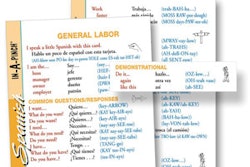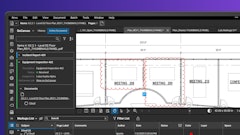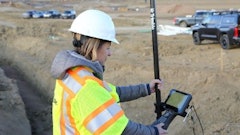
If you have field crews, every minute they lose on site costs you money. Not exactly earth shattering news is it? But yours do lose time, right?
I mean, really, all contractors know their crews waste time. It grates on them. It hacks them off. It drives them nuts. As well it should. It probably does the same to you, doesn't it?
The question is what can you do to keep your crews from losing time? Today, you're going to be presented with a simple little planning tool that will go a long ways towards eliminating lost time.
Before we get started, please take a moment and jot down every solution you've tried to fix the problem. Got your list? Compare it to the one below.
Based on conversations I've participated in, overheard, or read about, the standard solutions are:
- Bribe them (with a bonus)
- Scream at them
- Threaten them
- Shame them
- Plead with them
- Micromanage them
- Train them
Do you see something missing from this list? You don't? How about the possibility that the solution revolves around YOU, not them?
I'm not suggesting that you are the only reason your workers lose time in the field. I'm suggesting that workers often are waiting on things that could and should have been taken care of long before the work was interrupted.
I'm suggesting that you may not plan the field work anywhere near as thoroughly as you should. Why am I suggesting that? Because I've rarely seen field work planned out well. And it needs to be if you are going to minimize wasted time, improve productivity and gain tighter control of your field costs.
The best planning tool I've seen is a little form that reminds you of the items you need to take care of before your crews hit the job. I've seen many versions of the form and many names for it but let's just call it a Crew Activity Plan.
Stupid name, right? I'll think of something better in the future but for now, let's go with Crew Activity Plan. For quick reference, we'll nickname it a CAP.
Before we go much farther, if you'd like a copy of what I'm about to describe, send me an e-mail and I'll attach it to the reply. I'm still too dumb to figure out how to stick it in the text-based e-mail. Sorry.
Your CAP should be made up of two sides. Side One is a scheduling form and side two is a place to record needed resources and information.
Side One of the Crew Activity Plan (CAP)
The purpose of Side One is to schedule the upcoming work. Done right, Side One looks eerily similar to a CPM schedule.
On this side, you list the upcoming work tasks. Then you mark the days the task should be performed. The chart should have a column titled "Activity" with plenty of room to describe the work task.
Next to the Activity column, set up 14 columns representing two weeks of time. Each column should be titled with the day of the week it corresponds to starting with M for Monday.
So, if your crews were getting ready to paint an apartment complex, one of the activities might be "Remove storm windows and doors." That should take less than two days (small complex), so mark a line through the columns M and T to indicate the two day activity. List all of the tasks that should be completed or started in the next two weeks. One row per task.
Scheduling the tasks will not only help you with Side Two, it will help you communicate the construction plan to your crew.
One great refinement to Side One for the advanced contractor is to have a column on the far left that indicates the man-hours budgeted for the activity. Crews tend to work faster when they know how much time has been budgeted for the job.
That's it for Side One. Easy, right?
Side Two of the Crew Work Plan (CWP)
The purpose of Side Two is to identify everything needed to keep the crews productive over the next two weeks. It has four sections.
- Material & Equipment Needs
- Labor Needs
- Information Needs
- Contingency Plan
Filling out each section is pretty straight forward. Look over the list of activities on Side One and jot down the materials, equipment, labor and information you need to complete the tasks efficiently.
Note when equipment can be returned. Note required crew size by day and whether anyone with special skills needs to be available. Indicate when the resources need to be on site and indicate who is responsible for seeing they get to the site on time.
Last but not least, write down what the crews should do in case of weather delays or other trades not being ready. Make these decisions long before the problem arises.
Miscellaneous Pointers
Update the CAP weekly in accordance with the crew's progress. Two weeks is usually the best time horizon but this planning form works equally well for complex three-day jobs as it does for four-week jobs. A copy of the plan should be left back at the office with the project manager.
If you are a commercial trade contractor, you might want to share the CAP with the GC's site superintendent (without the budgeting man-hours being shown).
CAPs force your foreman, or yourself, to really think through the project. Because of that, far less time will be lost by the field crews. They will have the resources they need to stay productive.




















